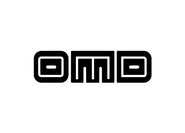The Nissan S-Chassis; the most iconic drift car of all time.
Martin didn't start with an S-chassis though, like so many different before and since, he instead began his drifting journey behind the wheel of a 1986 Mazda FC3S RX-7. The small wheelbase 2 Rotor platform was a great place for him to hone his drifting skills, but Martin realized that with his involvement with drifting as a whole and the work he was doing on s-chassis' for others he should get one for himself. So that's exactly what he did, he went out and bought an s14 to be his reliable seat-time daily drift car.
Over the next few years, Martin continued to upgrade his KA Turbo engine and develop his angle kit for the 240sx. However, as always with life, all good things must come to and end and he quickly began to notice his KA engine was going to let go. Couple that with the rising prices of both KA and SR engines due to the insane popularity of the S-chassis and he made the decision "Drive it 'till it stops and swap it with something new".
That day did come, his KA blew up and the time was upon us to decide the new engine for the car. Steve suggested his usual, a Ferrari v8 twin turbo setup (one that he had basically ready to go at that time). But Martin wanted to stay simple, which soon led to the idea of using a Toyota 3SGE with a turbo. A far cheaper option than an SR, with the ability to rev even higher and thanks to modern turbo technology, employ a super well balanced torque curve for usable drift power.
In the weeks that followed we found and bought a BEAMS engine from a JDM engine supplier for $1000 with the J160 transmission. A good deal at the time and an even better one now looking back. Early on we knew the car was going to be run on flex fuel with a combination of e85 and 91 octane street fuel. This combination would allow the 11:1 compression to be kept meaning off boost power would remain high. Steve began prepping the engine for this high compression turbo setup.
This prep included the elimination of VVT with a collection of small block offs, new Toda racing cam gears, and a custom timing setup similar to the timing used in Steve's turbo Ferraris. With the engine set up, Martin was able to fabricate temporary engine mounts that would give Steve the proper measurements to make the CNC engine and transmission mounts (the same ones we now sell).
With the engine now fully mounted in the car, Martin built a custom equal length turbo header for the car using the Garrett G25 660 turbo. The car also utilizes a v-mount style radiator and intercooler setup with CNC machine intercooler end tanks. After some other small details were finished up Steve made a custom wiring harness for the car using our favorite ECU, DTA Fast.
The car was tuned entirely on the street and was only dyno'd a year later just for fun, making 426 whp. Martin was able to drive the car on the street for a couple months and just test the 3S engine and make sure he was comfortable with the tune and the engine as a whole. The time was finally upon Martin, he loaded the car up on his trailer and took it out to Grange (a.k.a Apple Valley Speedway) for the first drift test with the Beams engine.
The car performed amazingly, the off boost power was great thanks to the stock high compression which meant a super useful powerband in 2nd and 3rd gear. The 8000 rpm made for a super unique sound with Martin's custom header and exhaust design. However, the biggest thing we realized is the potential for a reliable drift car that would allow Martin to get seat time like never before.
Over the next two years Martin took his s14 to 15+ drift events and was able to progress his driving abilities faster than ever before. The car dealt with heat beautifully and was able to hot lap time and time again and allow a deep dive into the D-Dimension where true progression of driving skill happens. However after 2 and a half years running and a dozen or more drift events, the plucky little 4 cylinder we bought for $1200 finally gave out.
One week after the engine let go we took it out of the car and dismantled it to asses the damage. Once we took the head off the damage was quite apparent. A titanium valve had dropped into cylinder 3 and blown apart the piston, then causing a massive hole to be created in the cylinder wall. The broken pieces of piston #3 went into cylinder 2 and destroyed that piston and the rod.
We believe the valve broke due to a small amount of valve float leading to the valve fatiguing after making repeated contact with the top of the piston. Our belief is a lower RPM limit or some stiffer valve springs would remedy this issue.
However, there was one good thing that came out of the engine breaking, we were able to look at the wear on other engine compoents, such as the rod bearings, head gasket, the non broken piston and rods, etc. We realized that outside of that valve failure the engine looked nearly perfect internally and we were happy with the way everything else looked.
About one week before we broke engine number 1, Martin had bought a spare engine as a precaution for the future, which meant we already had an engine in the shop ready to go. Less than two weeks after it broke, the S14 is back up and running again!
Let's hope it lasts even longer this time!
